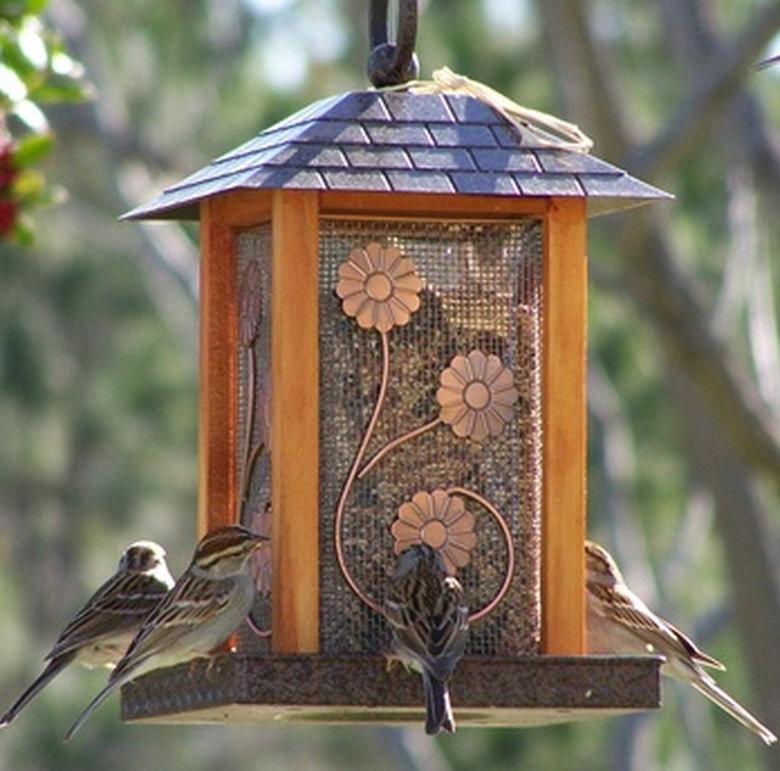How To Grow Black Thistle Bird Seed For Birds
Black thistle bird seed is known as Niger, Nyger or Nyjer seed. The plant that produces the seed is not related to a thistle, but the tiny seed resemble the seeds of the thistle plant. The seeds are widely cultivated in Asia and Africa for their oil content, as a livestock feed and for export as a bird seed feed. Nyjer seed from bird seed is heat-treated to prevent germination before export. About 80 percent of the seeds are rendered incapable of germination through this method, but the remaining 20 percent will sprout. The plant produces an abundance of yellow flowers, and each flower head contains 30 to 40 seeds.
Step 1
Plant the seeds in the springtime after all danger of frost has disappeared. The black thistle Nyjer is normally grown as an annual, but it self-seeds readily and spreads. Once a bed is successfully seeded, it will produce the plants by seed the following spring.
- Black thistle bird seed is known as Niger, Nyger or Nyjer seed.
- The black thistle Nyjer is normally grown as an annual, but it self-seeds readily and spreads.
Step 2
Choose a location that offers full sun to plant the Nyjer seed. The seeds can survive in diverse soil conditions. In Africa, the black thistle seeds are grown in poor soil conditions that often suffer from extensive runoff and erosion.
Step 3
Mix 50 percent peat moss with 50 percent garden soil. Smooth the seed bed, and remove all weeds.
Step 4
Sprinkle the seeds onto the ground and lightly cover them with 1/2 inch of soil.
Step 5
Add 1 to 2 inches of mulch, such as peat moss or sawdust, over the seeds.
- Choose a location that offers full sun to plant the Nyjer seed.
- In Africa, the black thistle seeds are grown in poor soil conditions that often suffer from extensive runoff and erosion.
Step 6
Water until the soil is moist. Do not flood the seeds. Keep the soil moist as you await germination.
Step 7
Thin the plants if an abundance of seeds sprout. Space the plants every 6 inches, discarding pulled seedlings.
Step 8
Harvest the black thistle Nyjer seed heads after four months. The plants produce bright, yellowish-orange flower heads that turn into seed pods. The seed pods can remain on the plant to feed wild birds during fall and winter, or they can be gathered to feed caged birds. Leave a few seed heads so the plant can reseed to return in the spring. Allow the seed heads to dry when harvesting, and then shake the seed heads to release the seeds into a plastic bag.
- Water until the soil is moist.
- Allow the seed heads to dry when harvesting, and then shake the seed heads to release the seeds into a plastic bag.
Tip
Nyjer can easily spread and become a noxious weed if not maintained.
Things Needed
- Nyjer seeds
- Peat moss
- Mulch (peat moss or sawdust)
- Plastic bag
